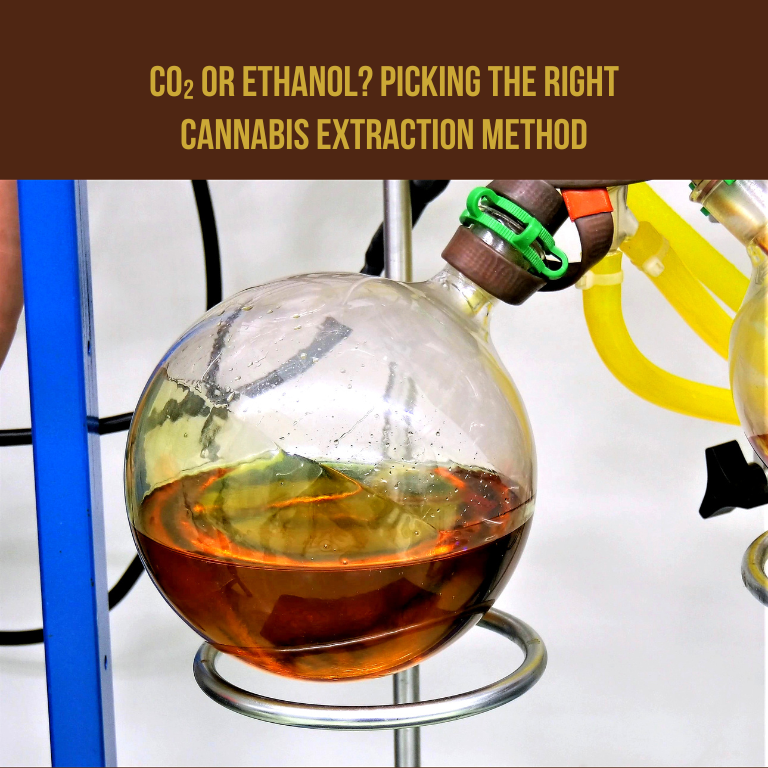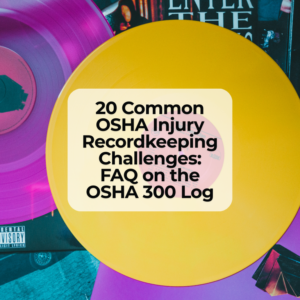CO₂ or Ethanol? Picking the Right Cannabis Extraction Method

As the cannabis industry expands, cannabis extract products—such as oils, tinctures, and concentrates—have become increasingly popular for both medical and recreational use. Choosing the right extraction method is critical to producing a high-quality product, and two primary extraction methods stand out in the industry: CO₂ (carbon dioxide) extraction and ethanol extraction. Each method has unique advantages and challenges, and the choice between them often depends on factors like the desired product, production scale, and operational costs. This article explores CO₂ and ethanol extraction methods in depth, comparing their processes, benefits, drawbacks, and suitability for different product types.
Understanding CO₂ Extraction
CO₂ extraction uses carbon dioxide in its supercritical state (where it exhibits properties of both a gas and a liquid) to separate cannabinoids and terpenes from the cannabis plant. In supercritical CO₂ extraction, pressurized CO₂ acts as a solvent, breaking down plant material and carrying the extracted compounds to a separation chamber, where pressure is released and cannabinoids precipitate out.
Process of CO₂ Extraction
The CO₂ extraction process starts by chilling and compressing CO₂ until it reaches its supercritical state. In this state, CO₂ can penetrate plant material like a gas and dissolve it like a liquid. Cannabis biomass is loaded into an extraction vessel, and CO₂ flows through it, drawing out desirable compounds. The extract-laden CO₂ is then transferred to a separator where cannabinoids and terpenes precipitate out due to a drop in temperature and pressure, yielding a concentrated oil.
Benefits of CO₂ Extraction
Purity and Customization: CO₂ extraction is highly selective, allowing operators to target specific cannabinoids and terpenes, resulting in a purer product with fewer unwanted compounds.
Solvent-Free and Safe for Consumption: Since CO₂ is a natural gas that leaves no residue, the resulting extract is clean and free of solvents, making it safe for human consumption.
Environmental Impact: CO₂ is a recyclable gas, making this method more sustainable and eco-friendly compared to other solvent-based methods.
Drawbacks of CO₂ Extraction
High Initial Costs: CO₂ extraction requires specialized equipment, which can be expensive. For smaller businesses, the high cost of CO₂ extractors might be prohibitive.
Complex Operation: CO₂ extraction requires skilled operators and careful calibration, which can increase labor costs.
Time-Consuming: The process can be slower compared to ethanol extraction, potentially limiting production capacity in high-demand settings.
Understanding Ethanol Extraction
Ethanol extraction uses ethyl alcohol (ethanol) as a solvent to extract cannabinoids, terpenes, and other compounds from cannabis. Ethanol extraction is commonly used in industries that require large-scale production because of its efficiency and cost-effectiveness. Ethanol is highly effective at dissolving cannabinoids, especially when chilled, which helps prevent the extraction of unwanted plant materials like chlorophyll.
Process of Ethanol Extraction
The ethanol extraction process begins by soaking or washing cannabis biomass in ethanol. Depending on the temperature of the ethanol, the extraction process can yield varying profiles; for example, room-temperature ethanol may extract more chlorophyll, resulting in a greener product, whereas cold ethanol avoids chlorophyll extraction. After the extraction, the ethanol solution is filtered and subjected to an evaporation process to separate the cannabinoids and terpenes, leaving behind a concentrated cannabis extract.
Benefits of Ethanol Extraction
High Efficiency: Ethanol is an excellent solvent, effectively extracting a wide range of cannabinoids and terpenes, making it ideal for producing full-spectrum extracts.
Cost-Effective and Scalable: Ethanol extraction systems tend to have lower equipment costs compared to CO₂ systems and are often easier to scale for large-batch production.
Versatile Extraction Options: Ethanol’s flexibility allows it to be used in cold, warm, or room-temperature extractions, each with unique advantages.
Drawbacks of Ethanol Extraction
Residual Solvent Concerns: Ethanol can leave residual solvents in the final product if not properly purged. The presence of any residual solvents must meet regulatory standards to ensure consumer safety.
Less Precision in Targeting Compounds: Unlike CO₂, ethanol is less selective, potentially pulling unwanted compounds, especially if extraction isn’t carefully controlled.
Environmental Impact: Ethanol is often derived from crops like corn, which can have a larger environmental footprint compared to the CO₂ method, which uses a recyclable gas.
CO₂ vs. Ethanol Extraction: Comparing Key Aspects
Choosing between CO₂ and ethanol extraction often depends on specific goals, such as product quality, production capacity, and target market. Below is a detailed comparison of key aspects of each method.
| Aspect | CO₂ Extraction | Ethanol Extraction |
| Purity | Produces cleaner, solvent-free extracts | Requires post-processing to remove residual solvent |
| Environmental Impact | Uses recyclable CO₂, eco-friendly | Relies on ethanol, which has a larger carbon footprint |
| Extraction Efficiency | Time-intensive but precise | Fast, efficient, but can pull unwanted compounds |
| Cost of Equipment | High initial cost, sophisticated machinery needed | Lower initial cost, simpler equipment |
| Scalability | Best for high-purity niche markets | Easily scalable for large production |
| End-Product Diversity | Great for terpene-rich, tailored products | Versatile, especially for full-spectrum extracts |
Product Types and Market Suitability
The selection between CO₂ and ethanol extraction also depends on the end products a business aims to create and the market segment they target.
CO₂ Extraction’s Product Suitability
CO₂ extraction is particularly popular for products that prioritize purity, such as:
Vape Cartridges and Pens: CO₂ extraction captures a full terpene profile, enhancing flavor in vaping products.
Medicinal Products: Solvent-free, high-purity extracts are ideal for medicinal products that need consistent, reliable formulations.
Cosmetic and Topical Products: The absence of ethanol residues makes CO₂ extracts appealing for skin care and wellness items.
Ethanol Extraction’s Product Suitability
Ethanol extraction is highly efficient for producing full-spectrum products that require broader cannabinoid and terpene profiles, such as:
Tinctures and Oils: Ethanol’s solubility in oils makes it suitable for creating full-spectrum cannabis oils and tinctures.
Edibles: Ethanol extraction is often used in edibles because it efficiently extracts the full range of cannabinoids, enhancing potency.
Large-Scale Manufacturing: Ethanol extraction’s scalability makes it ideal for companies producing cannabis products in bulk.
Safety and Regulatory Compliance
Both CO₂ and ethanol extractions must meet strict safety and regulatory standards, particularly in the rapidly evolving cannabis industry. The extraction method impacts final product quality and safety, influencing compliance with both state and federal laws.
CO₂ Safety and Compliance: CO₂ extraction is generally considered safer because it doesn’t involve flammable solvents. The resulting extracts typically meet stringent regulatory standards due to the absence of solvent residues.
Ethanol Safety and Compliance: Ethanol extraction requires careful handling, as ethanol is highly flammable. Additionally, ethanol-extracted products must undergo rigorous testing to confirm they meet permissible residual solvent limits.
In regions where regulatory bodies like the FDA or Health Canada oversee cannabis production, both methods are considered viable; however, CO₂ extraction’s solvent-free profile can offer a compliance advantage.
Costs and Operational Considerations
For businesses weighing the costs associated with each method, the decision often comes down to balancing initial investment and production needs.
CO₂ Extraction Costs: While CO₂ extraction equipment represents a larger upfront investment, this method typically yields a higher profit margin due to its purity and appeal in the medicinal cannabis market.
Ethanol Extraction Costs: Ethanol extraction equipment is generally less costly to purchase and maintain. Ethanol is also less costly than CO₂, making it a more feasible choice for businesses with tighter budgets or higher production volumes.
Which Method Should You Choose?
Ultimately, selecting the right extraction method depends on a business’s objectives, target product types, and operational constraints. Below are some key considerations for choosing between CO₂ and ethanol extraction:
For Purity and High-Quality Products: CO₂ extraction is generally the better choice for businesses targeting premium markets, where product purity and customization are priorities. CO₂ extraction produces solvent-free extracts that appeal to consumers seeking top-shelf or medical-grade products.
For Large-Scale Production and Full-Spectrum Extracts: Ethanol extraction is often favored for large-scale production because of its cost-effectiveness and scalability. Ethanol is particularly suited for companies that prioritize full-spectrum products like edibles, tinctures, and oils.
Both CO₂ and ethanol extraction methods offer unique advantages in the cannabis industry, and the choice between them ultimately depends on a business’s product goals, target market, and production capacity. CO₂ extraction is a solvent-free, eco-friendly option that excels in producing high-purity, terpene-rich products, making it ideal for premium markets. On the other hand, ethanol extraction offers versatility and scalability, making it suitable for full-spectrum products and large-scale manufacturing.
As the cannabis industry continues to grow and consumer demand evolves, understanding the distinctions between CO₂ and ethanol extraction will be critical for producers looking to establish a competitive edge and cater to specific market demands.











